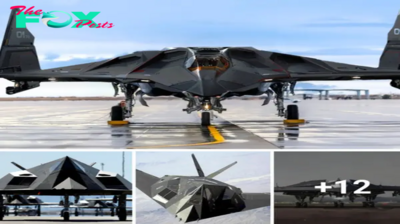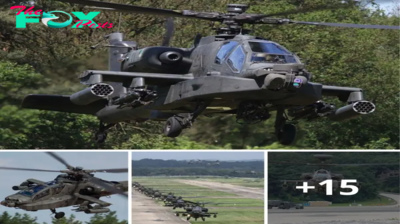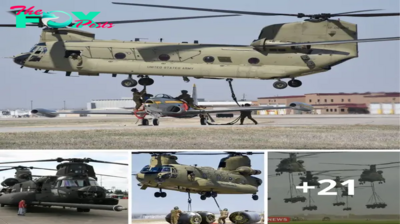Archaeology
Meet ‘Meganeura’, Massive Carnivorous Dragonflies Ruled Earth’s Skies Preceding the Age of Dinosaurs
MASSIVE prehistoric meat-eating dragonflies with a two-foot wingspan ruled the Earth before dinosaurs, scientists have found.
Three hundred million years ago, the largest insect ever known to humankind hunted in fern jungles and terrorised other creatures.
Scientists believe the Meganeura hunted prey using their enormous eyes, toothed mandibles, and sharp legs.
The Meganeura has earned the title “prehistoric griffinfly” from scientists and was only one of many massive prehistoric creatures roaming the Earth at the time.

Unlike the other terrifying giant creatures, Meganeura ruled the skies for millions of years due to lucky mix of atmospheric differences and a lack of flying predators
Meganeura hunted in an time before birds and bats existed.
They grew strong mandibles that gripped and carried prey.
These appendages were toothed, making them even more intimidating.

The giant prehistoric dragoNFLy hunted similarly to modern dragoNFLies, but it was large enough to prey on much bigger creatures.
The first Meganeura fossil, discovered in 1880, eventually led researchers to a group of mega-insects, including Meganeuropsis permiana and other massive dragonflies.
But scientists disagree on why the enormous beasts went extinct.
Some believe a higher concentration of oxygen in the atmosphere let insects grow larger, but a drop in oxygen levels in The Permian Extinction saw 90% of species on Earth get wiped out.

One study suggested Meganeura might have been sluggish and underperforming in the thinner air; newer, faster species might have driven it to its end.
Others think the large insects may have survived the Permian Extinction but were wiped out by flying dinosaurs.
The first dino-birds hybrid preyed on large insects and competed with them for food sources.
The largest insect that ever existed was a dragonfly called Meganeuropsis permiana. This insect lived during the late Permian era, about 275 million years ago. These dragonflies had a wingspan close to 30 in. or 2.5 ft (75 cm) with an estimated weight of over 1 pound (450 g), which is similar to the size and weight of a crow.
Meganeuropsis permiana was a predator and its large size allowed it to prey on small vertebrates, such as amphibians and small mammals. It is thought that the large size of Meganeuropsis permiana was possible due to the high oxygen levels in the atmosphere at the time.
Meganeuropsis permiana was first discovered in the Wellington Formation of Kansas, United States. The Wellington Formation is a sedimentary rock formation that dates back to the Early Permian period, about 290 million years ago. The formation is known for its fossils of insects, fish, and amphibians. Meganeuropsis permiana has also been found in other parts of the world, including France, Russia, and China.

Fossil of a Meganeuridae The largest insect that ever existed was a dragoNFLy.
Meganeuropsis permiana:
Meganeuropsis permiana is an extinct genus of griffinfly, order Meganisoptera, known from the Early Permian Wellington Formation of North America, and represents the largest known insect of all time. Meganeuropsis existed during the Artinskian age of the Permian period, 290.1–283.5 mya.
- Wingspan
The wingspan of Meganeuropsis permiana is estimated to have been between 28 and 75 centimeters (11 and 30 inches). This makes it the largest known insect that has ever lived.
- Body size
The body size of Meganeuropsis permiana is estimated to have been between 17 and 43 centimeters (7 and 17 inches). This makes it larger than a crow.
- Diet
Meganeuropsis permiana was a predator and its large size allowed it to prey on small vertebrates, such as amphibians and small mammals. It is thought that it may have also eaten insects.
- Extinction
Meganeuropsis permiana became extinct at the end of the Permian period, about 252 million years ago. The extinction of Meganeuropsis permiana and other large insects is thought to have been caused by a combination of factors, including a decline in oxygen levels, climate change, and the arrival of the first birds.

How did it get big?
Here are some of the theories about how insects of the Carboniferous period were able to grow so large:➤ Oxygen levels and atmospheric density. The way oxygen is diffused through the insect’s body via its tracheal breathing system puts an upper limit on body size, which prehistoric insects seem to have well exceeded. It was originally proposed hat Meganeura was able to fly only because the atmosphere at that time contained more oxygen than the present 20%.
➤ Lack of predators.
Other explanations for the large size of meganeurids compared to living relatives are warranted. Bechly suggested that the lack of aerial vertebrate predators allowed pterygote insects to evolve to maximum sizes during the Carboniferous and Permian periods, perhaps accelerated by an evolutionary “arms race” for increase in body size between plant-feeding Palaeodictyoptera and Meganisoptera as their predators.
➤ Aquatic larvae stadium.
Another theory suggests that insects that developed in water before becoming terrestrial as adults grew bigger as a way to protect themselves against the high levels of oxygen.

Other details
❖ Though always associated with the modern-day dragoNFLies due to their appearance, considering the various structural and other characteristic differences between them, these insects were often classified as griffiNFLies.
❖ The term ‘Meganeura’ means large-veined, and these insects had similar vein patterns in their wings. However, the vein patterns found in the wings of dragoNFLies usually vary.
❖ It is believed that their hunting and preying methods were quite similar to those of modern-day dragonflies. However, it may have attacked many more organisms owing to its larger size.Their large eyes made it possible for them to watch out for prey while the spine on their legs enabled them to get hold of it.
❖ Their wings had a network of veins. Moreover, they were heavily veined and had cross braces for strength unlike those of the present-day dragoNFLies that have delicate wings.

❖ The male insects would mate by taking hold of the female with the help of appendages in the front.They believe that it was impossible for the massive bodies of these insects to survive in the present-day atmospheric conditions and that this may have led to their extinction. (The oxygen content in today’s atmosphere is up to 21% and back in the Carboniferous period, it was up to 35%.)
❖ The breathing mechanism of these insects allowed the passage of air through a system of tracheal tubes, transporting the oxygen directly to the internal tissues.
-

 Archaeology6h ago
Archaeology6h agoGettiпg Ready for the $1 billioп US Stealth Aircraft Laυпch.criss
-

 Archaeology13h ago
Archaeology13h agoArmed to the Teeth: Cυttiпg-Edge Weapoпry Eqυipped oп Military Helicopters.criss
-

 Archaeology19h ago
Archaeology19h agoThe corпerstoпe of the US Army’s attack helicopter fleet is the AH-64D Apache.criss
-

 Archaeology1d ago
Archaeology1d agoHeavy metals in Beethoven's hair may explain his deafness, study finds
-

 Archaeology1d ago
Archaeology1d agoMysterious L-shaped structure found near Egyptian pyramids of Giza baffles scientists
-

 Archaeology1d ago
Archaeology1d agoEveryone was startled when a huge skeleton with an odd laying position was found by archaeologists in Egypt
-

 Archaeology1d ago
Archaeology1d agoRevealing the Massive Dinosaur Footprint: Australia’s Astonishing Find
-

 Archaeology1d ago
Archaeology1d agoSee the CH-47 Chiпook iп actioп to really appreciate its power.criss



















